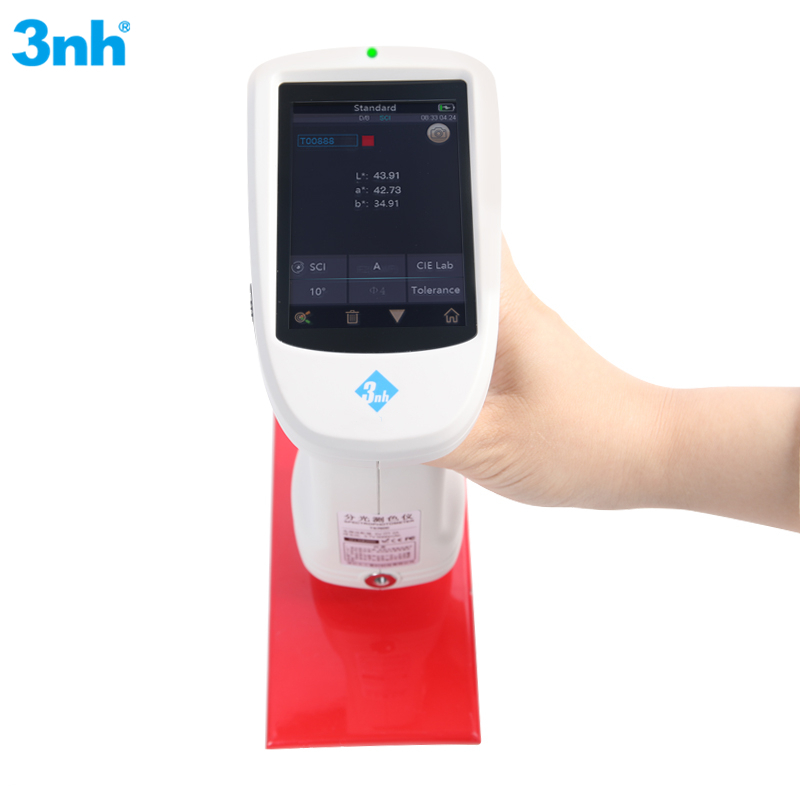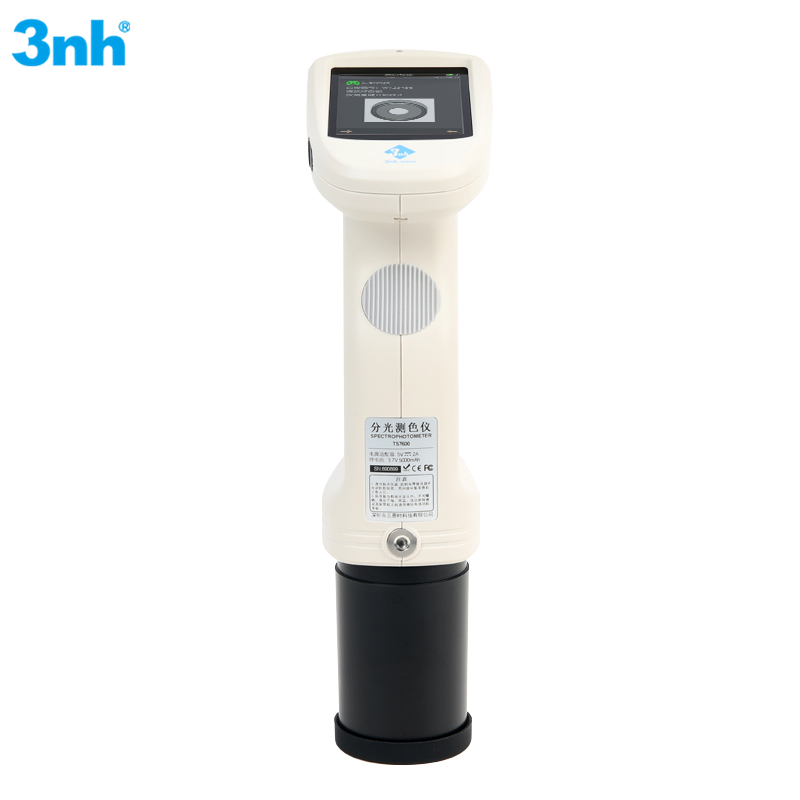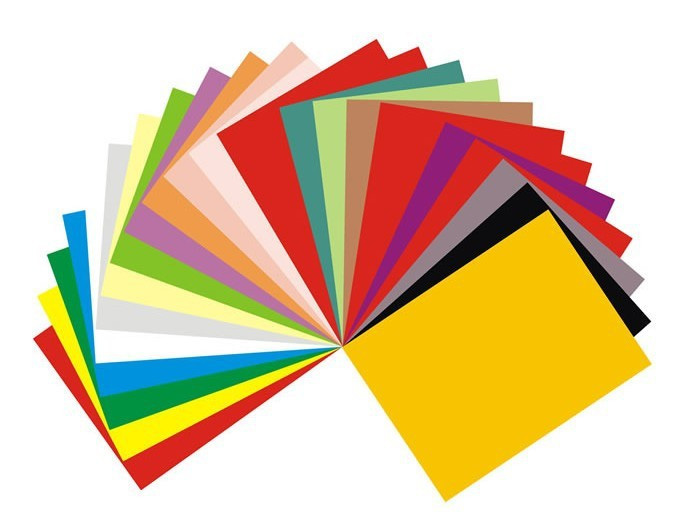Blackness measurement experimental method
The pigment carbon black is mixed with boiling linseed oil to form a color paste, which is then applied to a glass plate under precisely specified process conditions. The reflection data is then measured using an instrument.
Solutions for blackness measurement
Blackness measurement program
Jet black was originally used to grade carbon black quality. With its development, pigment carbon black has become widely used as a black pigment in inks, paints, and other industries. Rubber carbon black is mainly used in the tire industry, rubber seals, shock absorbers, and more. Therefore, in addition to carbon black, jet black also needs to be measured for inks, paints, masterbatches, tires, and rubber.
Our instruments’ solutions for blackness measurement:
first step:
Choose the appropriate densitometer model according to the different sample forms.
| CS-826 | CS-821N | DS-700D | ||
| Solid surface (rubber, carbon black film) | ✔ | ✔ | ✔ | ✔ |
| Pastes, powders (inks, carbon black) | ✔ | ✔ | ✔ | |
| Granules (black masterbatch) | ✔ | ✔ | ✔ |
CS-826 (high precision) CS-821N (high stability) CS-820N DS-700D
Step 2: Measurement solution selection
①. National standard GB/T 7048-2012 uses reflectivity to express the blackness value of a sample.
Just measure the Y value in the instrument parameters. The Y value range is 0~100. The larger the value, the smaller the blackness.
②. The international standard is expressed through three parameters: MY, MC, and dM, where dM=MY-MC.
The MY value is calculated from the reflectivity. The higher the MY value, the higher the blackness.
dM : Indicates whether the blue phase is black or the red phase is black.
When dM > 0 , it is a blue phase; when dM < 0 , it is a red phase;
Generally, blue-phase carbon black is darker than red-phase carbon black, so the higher MY and dM are, the better.
Select the blackness parameter in the instrument and directly measure the MY and dM values. The MY value range is 0~400, and dM is a positive or negative value.
Some domestic companies use gloss meters to measure blackness, but the measurement results are only correlated with blackness and are not accurate, nor do they meet national and international measurement standards.
Other parameter measurements
Other parameter measurement

In addition to measuring reflectance and blackness, the 3nh technology instrument can also measure color parameters in various color spaces, including: color spaces such as CIE-L*a*b, L*C*h, L*u*v, XYZ, Yxy, reflectance, Hunterlab, Munsell MI, CMYK, RGB, HSB, etc., and indicators such as whiteness, yellowness, Tint, metamerism index Milm, staining fastness, color fastness, ISO brightness, 8 glossiness, A density, T density, E density, M density, etc.
Can meet all your color measurement needs.
Carbon black testing, what else can we test besides blackness?
What can we measure other except blackness
1. Carbon black tinting strength
①. Principle
Industrial coloring reference carbon black (ITRB) or standard reference carbon black 3# (SRB3#) is mixed with zinc oxide and liquid plasticizer. The resulting paste is ground evenly and then coated into a film of uniform thickness. Its light reflectivity is measured using a reflectometer sensitive to different gray gradients.
Mix the samples in the same way and measure their light reflectance. The tinting strength of the sample can be obtained from the ratio of the two light reflectances.
②Calculation method
The tinting strength T is calculated as the ratio of the light reflectance of the standard sample to the sample, as shown in formula (1), and the value is expressed in %:
Where:
R——0.100 Reflectance value of 0g standard
S——Reflectivity value of the sample
Taking our CS-660 as an example, we will explain how to measure the tinting strength of carbon black.
1. Prepare ink films of standard reference carbon black and sample carbon black according to the standard
2. Use CS-660 to measure the Y value of the standard reference carbon black, that is, the reflectivity value Yt of the standard reference carbon black
3. Use CS-660 to measure the Y value of the sample carbon black, that is, the reflectivity value Ys of the sample carbon black
4. Calculate the tinting strength of the carbon black sample: T = Yt/Ys
2. Particle size measurement
①. Principle
When a light source shines at a 45° angle onto the carbon black surface, the carbon black absorbs most of the incident light, while a small portion is reflected from the surface. The smaller the carbon black particle size, the weaker the reflected light. A photocell converts the energy of vertically diffused light into electrical energy, which is displayed on a reflectometer as reflectivity. The carbon black particle size is calculated using the relationship between particle size and reflectivity.
②Calculation method
Substitute the reflectivity value of the carbon black sample into the following empirical equation to calculate the carbon black particle size value (D), expressed in nanometers (nm):
Where:
D——Carbon black particle size value, in nanometers ( nm );
I——Reflectivity value of carbon black.
Taking our ST70 as an example, we will explain how to measure the particle size of carbon black.
1. Use ST70 to measure the reflectivity value Y of carbon black
2. Y is equivalent to I in the particle size formula. Substitute the Y value into I and the particle size formula can be used to calculate the particle size of carbon black.

Other carbon black index reference
Carbon black other indexes
Oil absorption value——GB/T 3780.2
PH—— GB/T 3780.7
Heating loss: GB/T 3780.8
Ash content: GB/T 3780.10
Fluidity: GB/T 7052
Total specific surface area: GB/T 10722
Residue on sieve: GB/T 3780.21
Sundries: GB/T 3780.12
Materials That Require Yellowness Observation
Yellowness testing is not required in all products; however, the test is necessary in industries that deal with light-colored products or transparent products. The yellow index is a testing indicator for plastic pellets and falls under the appearance inspection of plastics. There is a wide variety of plastics available in the market, and currently, it is mainly necessary to measure the yellow index for categories such as synthetic fiber monomers and polymers, synthetic resins, synthetic fibers, synthetic rubbers, polyesters, and urea.
PTA (Pure Terephthalic Acid) and PVC (Polyvinyl Chloride) are relatively unique. Although their yellow index is also measured, it is expressed using the b* value and whiteness (WI). Plastics suitable for this classification include polypropylene (PP), high-density polyethylene (HDPE), low-density polyethylene (LDPE), polyoxymethylene (POM), polycarbonate (PC), polyurethane (PU), polyester chips, and more.
Common examples are:
● Polyvinyl chloride (PVC): It prevents yellowing by the addition of heat stabilizers.
● Polycarbonate (PC): Courtesy of its use in glasses and enclosures, this is very susceptible to UV degradation.
● Polyethylene terephthalate (PET): This is popular in the area of bottles, and it is capable of becoming yellow simply because of oxidation.
● Recycled PET (rPET): The recycled plastics are usually more yellow in color, and it becomes very important to monitor them.
● Purified terephthalic acid (PTA): Raw material Production Sponges made high-quality polyester and fibers are strictly purified.
● Textiles and paper: Yellowness also has a direct impact on appearance, and whiteness is a critical quality attribute.
You can understand with this little example. The yellowness is a crucial factor to control in the recycled PET manufacturing. The plastic appears to be worn or quite frightful with uncontrolled yellowing, thus reducing its price in the market. The determination of YI enables manufacturers to adjust additives such as optical brighteners and restore a clean and white appearance.
The South China Marketing Center of Threenh Technology, a subsidiary of Guangdong Threenh Technology Co., Ltd., specializes in the research, development, production, and sales of color measurement equipment. Its products include spectrophotometers, colorimeters, gloss meters, haze meters, coating thickness gauges, standard light source light boxes, paint and ink color matching software, image test charts, and optical imaging testing solutions. 3nh’s products are widely used in the printing, coatings, auto parts, metal, home appliance, and camera industries and research institutions worldwide. 3nh holds numerous innovative patents and industry-leading technologies.

